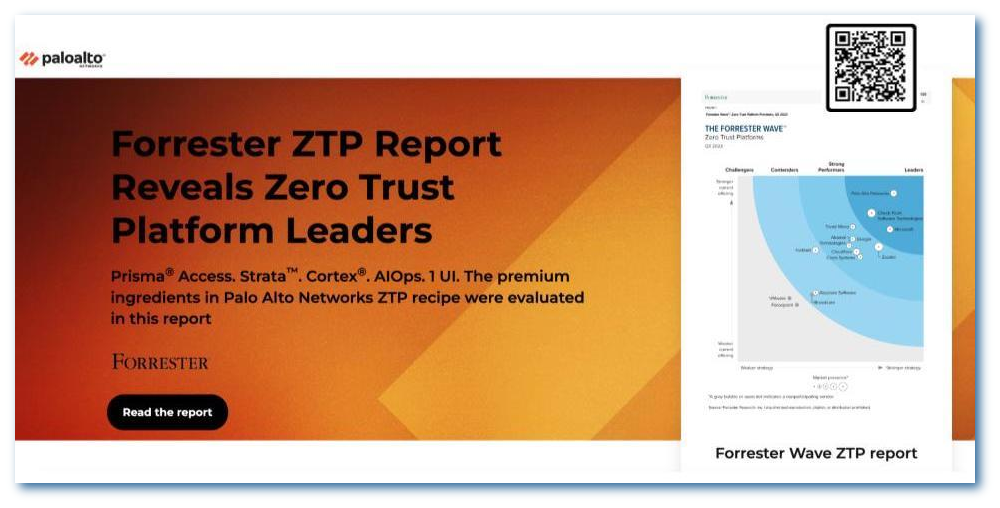AI and ML: The Keys to Better Security Outcomes
“Cybersecurity is the only industry with active adversaries. Those adversaries are using the power of AI and ML, and attacks are getting more and more sophisticated.”
– Anand Oswal, SVP and GM of Network Security, Palo Alto Networks.
From reducing complexity in the architecture to supercharging risk posture, building cyber resilience is top-of-mind for every organization. But, what does it take to achieve true cyber resilience in today’s rapidly changing cybersecurity landscape? How do you stay ahead of the latest threats while defending against zero-day attacks?
I had the pleasure of speaking with Anand Oswal, SVP and GM of Network Security at Palo Alto Networks. He shares his thoughts on the direction of enterprise security and how organizations can prepare for what’s next.
3 Major Trends in Cybersecurity
Cybersecurity is constantly evolving, but the present landscape is undergoing a distinct transformation. Anand shares the three trends he’s seeing in the industry:
1. The Move to the Cloud
Anand mentions that more workloads are rapidly moving to the cloud, with network and cloud security architects rethinking how to secure their shifting infrastructures. Migrating from on-premise data centers to the cloud often leaves critical security gaps, and misconfigurations open organizations to attack.
2. Remote and Hybrid Work
Despite recent return-to-office initiatives across the industry, flexible work arrangements are here to stay. Anand notes that organizations are grappling with securing applications and users wherever they are located.
“Ensuring that we’re able to secure a hybrid workforce in a consistent manner with best-in-class security – and also have consistent policies for users no matter where they are – is going to be very critical.”
3. The Changing Threat Landscape
Anand explains that adversaries are using artificial intelligence (AI) and machine learning (ML) to launch sophisticated cyberattacks. These malicious actors can generate attacks at scale and overwhelm traditional cyber defenses.
The Role of Data in AI
Our discussion goes deeper into the impacts of AI and ML on cybersecurity – an area where Palo Alto Networks leads the industry. Anand emphasizes how traditional approaches to cybersecurity can’t keep up with today’s threats.
Take URL filtering as an example, where policies were created based on URLs labeled and stored in a database. Today, malicious actors can easily activate and deactivate URLs, making databases obsolete before security teams can respond.
Anand emphasizes that AI and ML are key to analyzing data and recognizing attack patterns. This requires large amounts of data from across your infrastructure – network, endpoint, cloud and other critical enforcement points. When stitched together, this data provides key insights into your infrastructure, drives attack recognition and enables rapid incident response in the event of a breach.
“You can only have good cybersecurity through AI and ML. It’s almost impossible to do it manually.”
Why Security Consolidation Is Key to Better Outcomes
Pulling data from across your entire infrastructure for AI is challenging when your products and services are siloed. They use different datasets, contexts, logging conventions and UIs, hindering the AI’s ability to recognize patterns. But with security consolidation, your security products work seamlessly together to share intelligence and defend against sophisticated attacks.
Consolidation is more than using AI to detect threats, as Anand explains. It also reduces “the overall complexity of your environment.” Today’s organizations employ 31.5 security tools on average – each with its own procurement, implementation and maintenance requirements.
By consolidating your detection tools, you can significantly reduce the resources needed to manage these processes, build strategic relationships with your vendors, and achieve better security outcomes.
Securing Your Organization Starts with Consolidation
Before we wrapped up our conversation, Anand shared advice for security leaders in today’s changing cyber environment:
“As you look at consolidation, an important factor is: how do you ensure enterprise-wide Zero Trust? How do you get consistent security for users accessing applications and data from any device, on any network, from any location? How do you get consistent best-in-class security? How do you ensure the most optimal user experience? And, how do you ensure the best experience for NetSec admins? All of this is only possible when you have a platform-centric approach.”
Security leaders have a tremendous opportunity to rethink their defenses and build an AI-driven risk posture. That starts with choosing a partner that combines best-of-breed security with a platform approach.
Get a copy of the report where Forrester names Palo Alto Networks a leader in Zero Trust Platform Providers, Q3 2023. Learn why we were named a Leader.
Gain more insights from an authority figure in network security; watch the full interview with Anand Oswal here.
Related Blogs
Subscribe to the Newsletter!
By submitting this form, you agree to our Terms of Use and acknowledge our Privacy Statement. Please look for a confirmation email from us. If you don't receive it in the next 10 minutes, please check your spam folder.